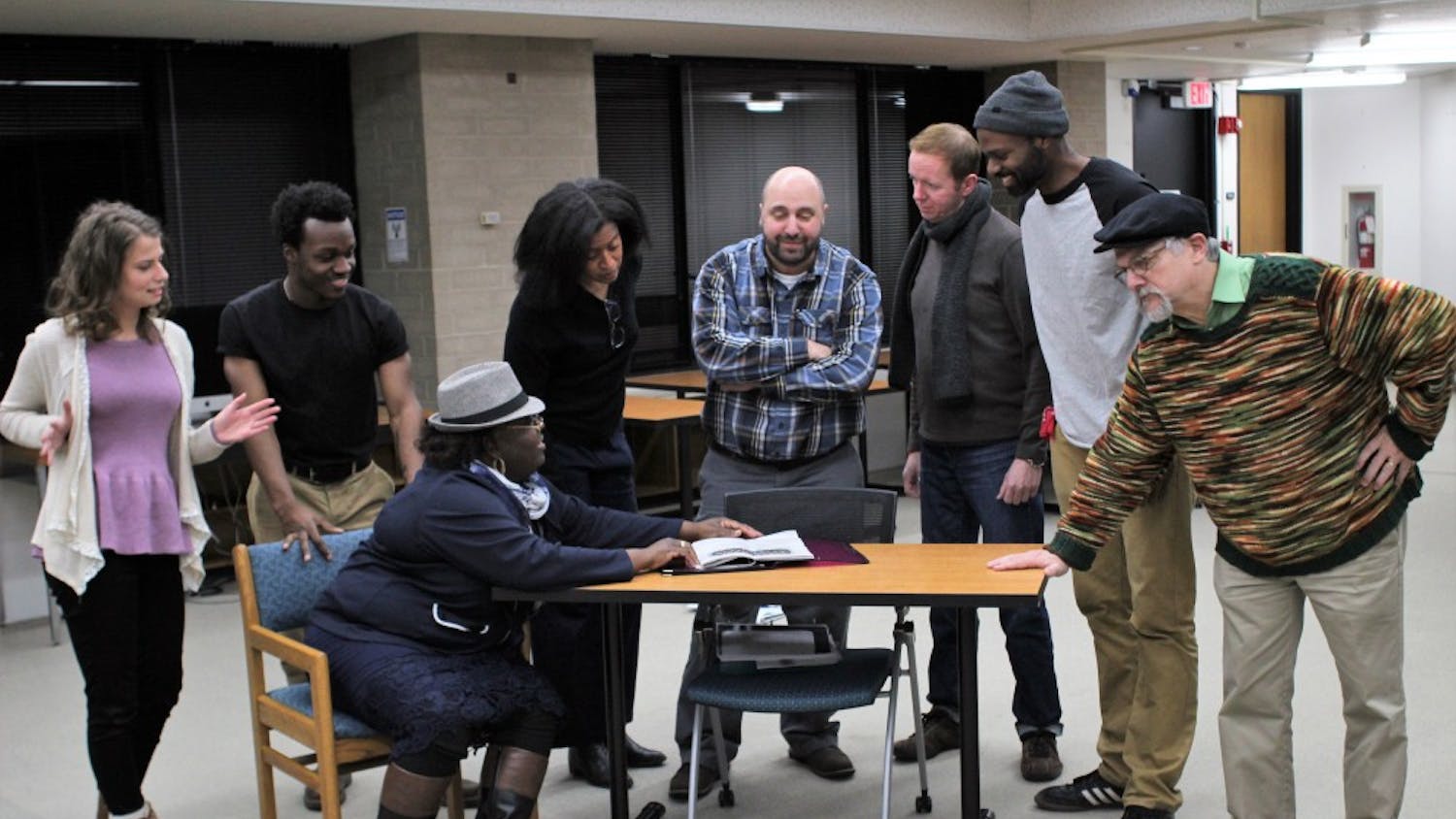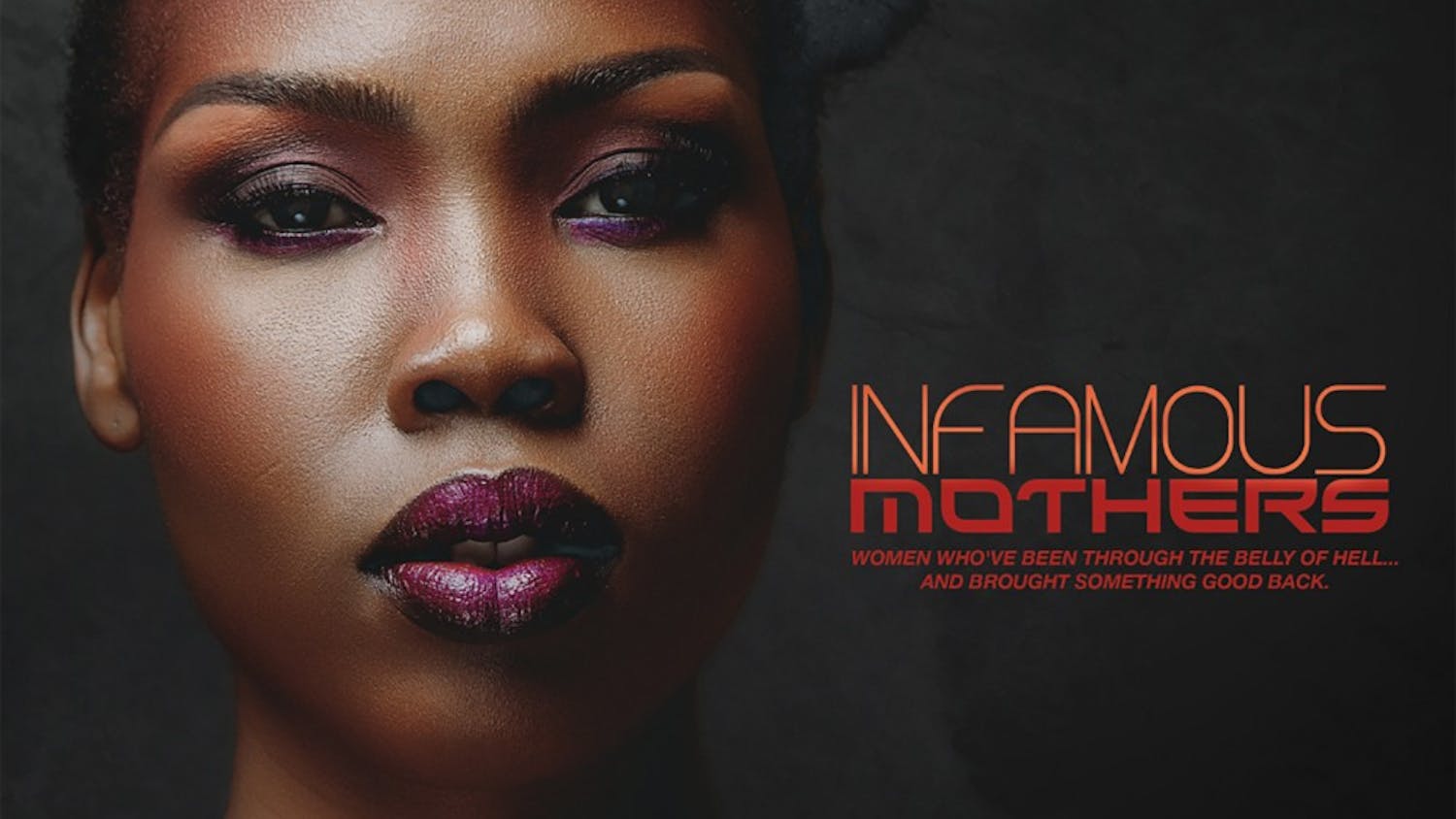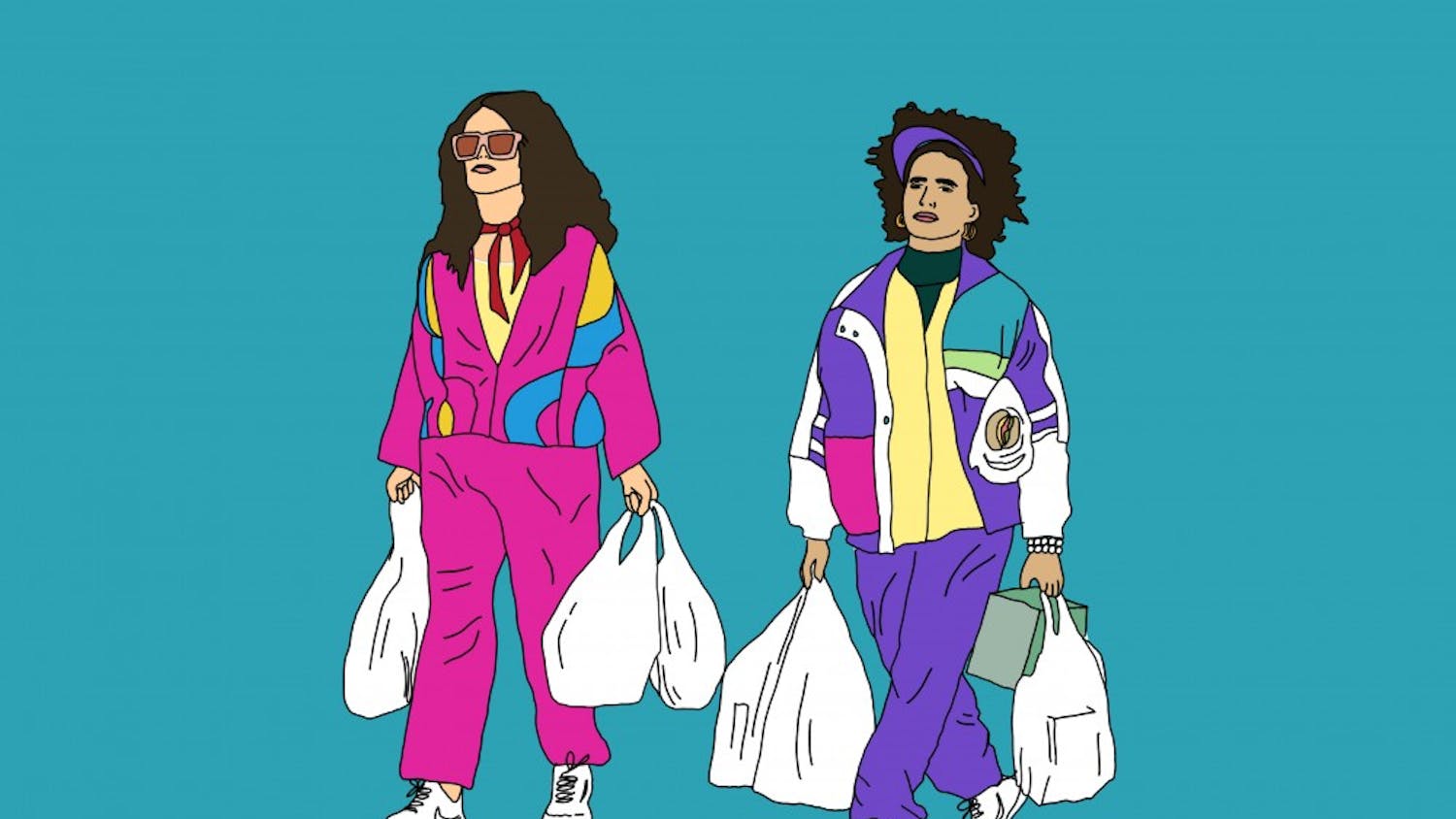Natural light peaks through the curtains, exposing stone and brick against light pastels and watercolors to create an elegant, cozy aesthetic. Self-portraits and floral images panel the walls at the Arts + Literature Laboratory.
The artist behind this creation — Yeonhee Cheong — created the “She Presents” exhibition to examine female presentation in different forms of media. The collection graced the gallery from Jan. 10 through Feb. 15.
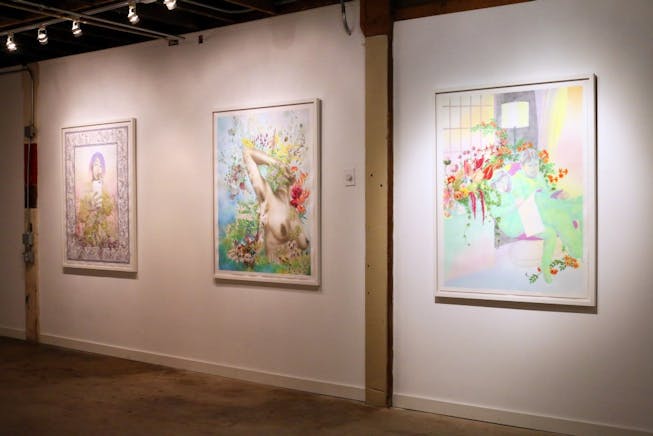
A person is represented through the physical appearance.
“What is done or undone in one’s appearance expresses one’s own and society’s desire and power to position the person,” Cheong said.
Bodily control has become a fascination in regard to presentation through clothing, makeup, plastic surgery and photoshop.
Appearance is another medium of art; an extension of ourselves to change or manipulate. Young girls are taught to care about their looks, their clothing. To navigate between conformity and defiance is extremely complicated work.
“The outcome might reflect internalization of the social norms they unconsciously surrender to,” Cheong said.
There is a discrepancy between how the reader understands the wearer’s context, which might result in something unintended or cause self-reflection. Cheong explores this concept through “woman” in multiple portraits and media portrayals.
Formerly a fashion designer now pursuing an MFA at UW-Madison, Cheong’s inspiration for the collection stemmed from maturation into motherhood and the conditions of women’s lives.
“I observed people on the street, looking at what they wore to figure out what’s in. At some point, I began to see what they are trying to signal with their outfit,” she said.
Following the move to Madison for her spouse’s job, Cheong discovered art in local terrain.
“When I saw the Wisconsin prairie in person for the first time, it was so inspirational with regard to women conditions. Before then, for me, I only knew the beauty of well-manicured gardens or cut flower arrangement. Prairie is not tamed to satisfy human’s norm of beauty, and the entities on the prairie in fact struggle with each other to survive.”
Cheong incorporates a range of mediums in her art, something that is prominent in the “She Presents” exhibit. She has a knack for noticing the tactile quality in thicker pigment layers of screenprinting or the dent of letterpress. Multiplicity is not the intention in her art. The medium varies on the subject to fully encompass the portrait of “woman.” In this exhibit, fiber work, installation and video are present.
The “Caption” letterpress series is the only series that focuses particularly on other women besides the artist. Each of the women are taken from a different background and explored further in captions depicting their presentation.
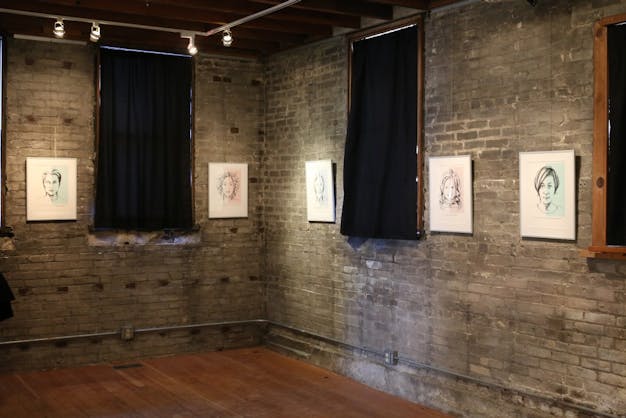
The meaning of identification is examined in this series with suspect sketches and ID photos. The images constructed resembled something of a facial composite for crime suspects in newspapers. The juxtaposition of the caption is intended to explain the content further yet remains incomprehensible due to the limited text. This requires the use of the viewer’s imagination to explore possible identities and stories of who these woman may be in society — what it would mean to live as them.
“People silently but eloquently say who they are or who they would like to be with their physical and material choices. Even being ‘invisible’ is a statement,” Cheong said.
The artist explores the fluidity of femininity and female representation. Rather than define it or let it define her, she questions it constantly in her art. There is an ambiguity in the images such as featuring androgynous people.
The second series of the exhibit is titled “Letter P.” The video showcases Cheong seated in a chair with text changing to the right of her. Each of the words contain the letter “p.” The depiction “simulates the shooting of a still ID-photo, which strips off everything but the minimum bodily presence (the enclosed body and the outfit),” noted on Cheong’s site.
The different “p” words express the changing presence of Cheong in how she presents herself and her work; there is a sense of anxiety and vulnerability when being put on display, but this does not prohibit her creativity, it becomes a part of it. The setting is minimalistic in its use of black and white colors to demonstrate “ordinary.”
The eloquence of this representation shows who we are and how we tend to present ourselves. Consecutive verbs presented next to Cheong reveal that even sitting, which seems simple, is in actuality doing so much to present itself in an ordinary way as well as something that is a learned, internalized behavior from society.
Presented on Cheong’s personal website under the “Letter P” series is a Margaret Atwood quote from “The Handmaid’s Tale”: “I wait. I compose myself. My self is a thing I must now compose, as one composes a speech. What I must present is a made thing, not something born.”
“She Presents” contains a third series that consists mainly of self-portraits of Cheong and her family. Drawing inspiration from the Wisconsin prairie and trend of flower design, she utilizes plants as an extension of herself. Cheong describes how there is rich visual vocabulary in botany and how meta-reality exists when wild “weeds” and flowers are used in paintings.
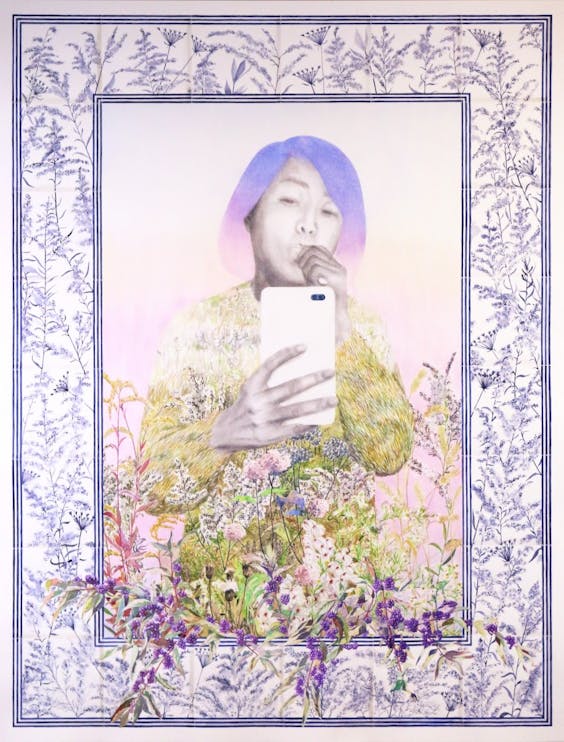
“As a woman, whose gender is often referred to as ‘flowers’ at their ‘prime,’ I understand the lives of flowers (more accurately the plants with flowers) personally, thus tell my life stories through them from the perspective as the subject rather than as the object that [is] controlled by others,” Cheong said.
The first portrait in the series is “A Professional’s Wife.” It depicts her sunroom and the plants growing inside it. She drew inspiration from a Sunday morning when her husband and son were reading in that room. The peaceful moment was captured in a photo, but it was the plants next to them that caught her eye.
“I saw [them], some are cut and transplanted, trying to root down and live. I suddenly identified myself with the plants because I, too, was struggling to settle down in this new city and build a community, a life,” Cheong noted.
This photo transformed into a watercolor painting where she is portrayed through a collection of plants and flowers that look over her son and husband.
Warmth radiates from Cheong, surrounded by wildflowers; contrastly her husband appears cold in the limited pastels. It references the stereotype where a “professional” husband’s success is viewed by his ability to provide for his family. The husband’s depiction in the painting is simple and frank in his presentation, conforming to traditional stereotypes of male and female roles.
This is just the beginning of Cheong’s work. She hopes to expand further on the self-portraits series as well as explore the “Caption” series with a man’s version.
“I think men are as restricted as women, though they have much more perks. Just think about the variety of clothing they wear and hair styles they do,” Cheong said.
Nothing is ever finished. The presentation and representation of people is continuously evolving.
The patriarchy continues to dominate the art world, but that does not mean new forms of feminist efforts are not created. Feminist art is gaining traction and refuses to stop for anyone. The appearance of women is another form of representation as well as a statement.
Lauren Souza is an arts editor for the Daily Cardinal. To read more of her work, click here


